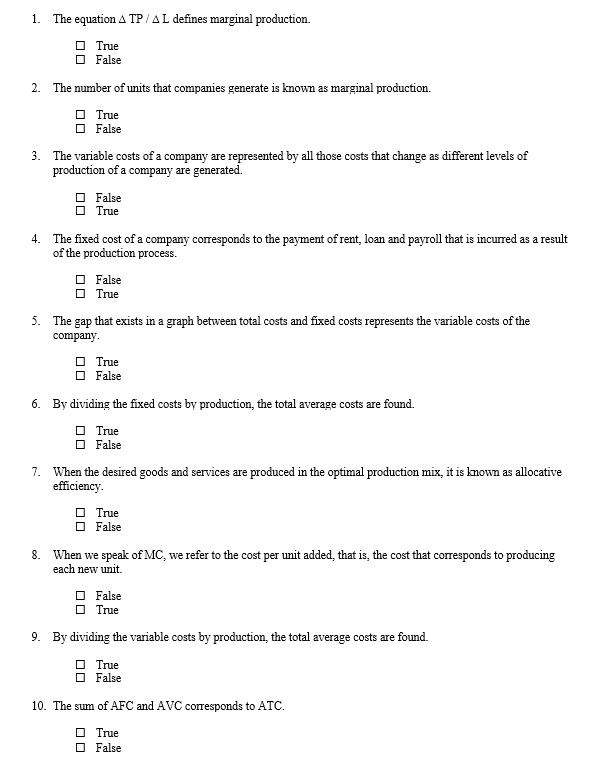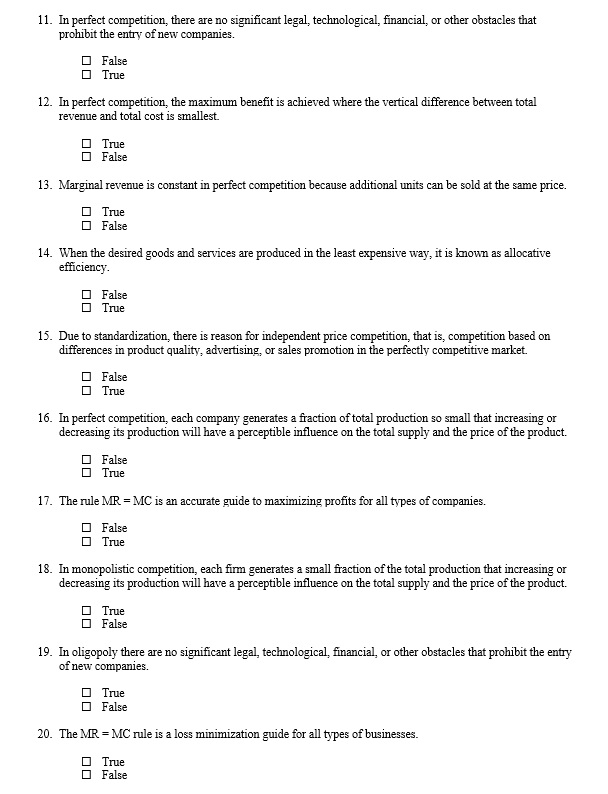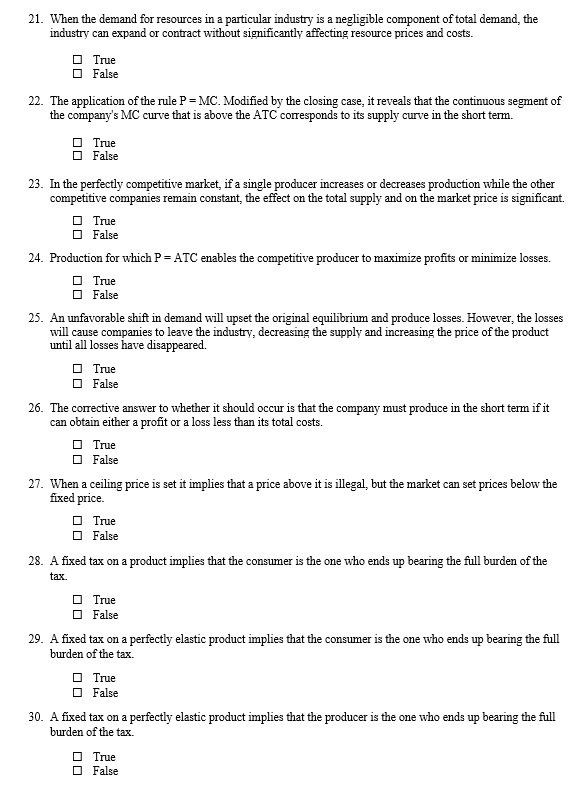Can you help with the following premises related to Microeconomics? Please chose the correct answers based on the premises. Thank you in advance. Part 1.
1. The equation A TP / A L defines marginal production. O True False 2. The number of units that companies generate is known as marginal production. O True False 3. The variable costs of a company are represented by all those costs that change as different levels of production of a company are generated. False True 4. The fixed cost of a company corresponds to the payment of rent, loan and payroll that is incurred as a result of the production process. False True 5. The gap that exists in a graph between total costs and fixed costs represents the variable costs of the company True False 6. By dividing the fixed costs by production, the total average costs are found. True False 7. When the desired goods and services are produced in the optimal production mix, it is known as allocation efficiency. True False 8. When we speak of MC, we refer to the cost per unit added, that is, the cost that corresponds to producing each new unit O False True 9. By dividing the variable costs by production, the total average costs are found. True False 10. The sum of AFC and AVC corresponds to ATC. True False11. In perfect competition, there are no significant legal, technological, financial, or other obstacles that prohibit the entry of new companies. 0 False True 12. In perfect competition, the maximum benefit is achieved where the vertical difference between total revenue and total cost is smallest. O True False 13. Marginal revenue is constant in perfect competition because additional units can be sold at the same price. True False 14. When the desired goods and services are produced in the least expensive way, it is known as allocation efficiency. False True 15. Due to standardization, there is reason for independent price competition, that is, competition based on differences in product quality, advertising, or sales promotion in the perfectly competitive market. False True 16. In perfect competition, each company generates a fraction of total production so small that increasing or decreasing its production will have a perceptible influence on the total supply and the price of the product. H False True 17. The rule MR = MC is an accurate guide to maximizing profits for all types of companies. O False True 18. In monopolistic competition, each firm generates a small fraction of the total production that increasing or decreasing its production will have a perceptible influence on the total supply and the price of the product. True False 19. In oligopoly there are no significant legal, technological, financial, or other obstacles that prohibit the entry of new companies True False 20. The MR = MC rule is a loss minimization guide for all types of businesses. True False21. When the demand for resources in a particular industry is a negligible component of total demand, the industry can expand or contract without significantly affecting resource prices and costs. True False 22. The application of the rule P = MC. Modified by the closing case, it reveals that the continuous segment of the company's MC curve that is above the ATC corresponds to its supply curve in the short term. OC True 23. In the perfectly competitive market, if a single producer increases or decreases production while the other competitive companies remain constant, the effect on the total supply and on the market price is significant. O True False 24. Production for which P = ATC enables the competitive producer to maximize profits or minimize losses. O True False 25. An unfavorable shift in demand will upset the original equilibrium and produce losses. However, the losses will cause companies to leave the industry, decreasing the supply and increasing the price of the product until all losses have disappeared. True False 26. The corrective answer to whether it should occur is that the company must produce in the short term if it can obtain either a profit or a loss less than its total costs. True False 27. When a ceiling price is set it implies that a price above it is illegal, but the market can set prices below the fixed price. O True False 28. A fixed tax on a product implies that the consumer is the one who ends up bearing the full burden of the tax. True False 29. A fixed tax on a perfectly elastic product implies that the consumer is the one who ends up bearing the full burden of the tax. O True False 30. A fixed tax on a perfectly elastic product implies that the producer is the one who ends up bearing the full burden of the tax. False









